Note: This website was automatically translated, so some terms or nuances may not be completely accurate.
From Architecture Geek to VR Geek
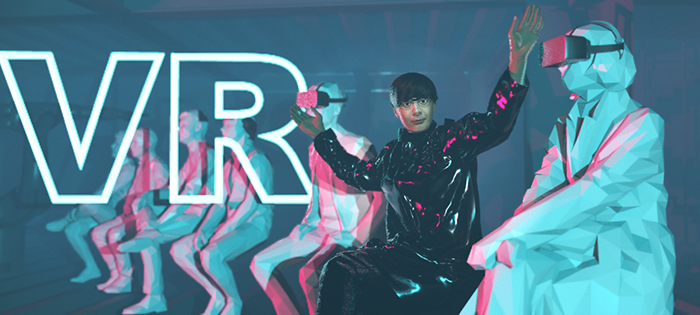
Hello, I'm Suesato from Dentsu Inc. CDC.
This might be sudden, but do you already have a business-use virtual avatar?
In the VR era, your VR avatar is a more important tool than a business card for professionals.
If you haven't created one yet, I recommend preparing one soon.
...Yes. To those thinking, "What the heck are you talking about all of a sudden?!"
Today, I'd like to share my personal perspective on what's happening in the VR world, starting from my university research and continuing through my daily virtual work.
First, take a look at this.
The video above is an introduction to VRchat, a social VR platform.
Cutting-edge creators freely design avatars (their digital bodies) and worlds (VR environments), sharing diverse content within VR. It's like the worlds of Ready Player One or Summer Wars are already happening in reality. VRchat hosts live events, art exhibitions, weddings, and even large-scale exhibition and sales events called Virtual Markets, attracting people from all over the world. This slightly chaotic space, currently only accessible to those with VR equipment, is buzzing with excitement reminiscent of the early days of the internet.
Design the Virtual Space
Actually, I studied architecture through graduate school.
Architecture students have design assignments where we propose designs for fictional clients. Since it's a student project, the buildings we envision never actually get built. That's when I bought an Oculus DK2 VR headset.
Using this gear allowed me to experience stepping right into the buildings I designed. It gave me a spatial experience impossible with models—a glimpse of what it might feel like if they were actually built. It was a huge shock to me at the time.
(On the other hand, seeing it at actual scale exposed all the flaws the model had glossed over—like ceilings too low to walk under or columns that pierced through walls—and I found myself clutching my head in frustration.)
At the time, I used this equipment with friends to conduct interviews in disaster-affected areas where older residents still lived. We listened to the memories of the town washed away during 3.11 from the elderly who had continued living there, and attempted to recreate it virtually by combining old blueprints and photographs.
As reconstruction began, complex coordination involving residents and the administration took place. Various businesses from outside the town also visited. At such times, if we had a base image of the town's original landscape, based on residents' memories, we could share what places people felt attached to and how the town's identity was formed. We attempted this salvage of memories. Additionally, we created a "future town" in VR, concretizing the ideas residents shared during the interviews about "the kind of town they wanted to build."

While this virtual initiative ultimately faced the challenges of "reality" at the practical level, it was a project that truly demonstrated VR's power: visualizing memories and blueprints creates a space where many people can easily share information.
I believe this kind of VR simulation use—showing "this is what it would look like if actually built"—is increasing. Many experiences that rose with the VR boom, like roller coaster rides or zombie shooting games, fall into this "experience-type" category. If you've tried VR, this is likely the type you're familiar with.
On the other hand, what I foresee accelerating further is the social VR I showed you at the beginning. Social VR isn't simulation; it's a continuum with reality. Simply put, it feels like you're actually living in the VR world, where the VR space is recognized as part of your living environment. The key point is whether you perceive events within VR as "this isn't real, it's just a simulation" or "it holds value just like reality."
In a book I read during my student days, Hans Hollein stated, "Everything is architecture." He argued that medication for claustrophobia patients was architecture because it acted upon space.
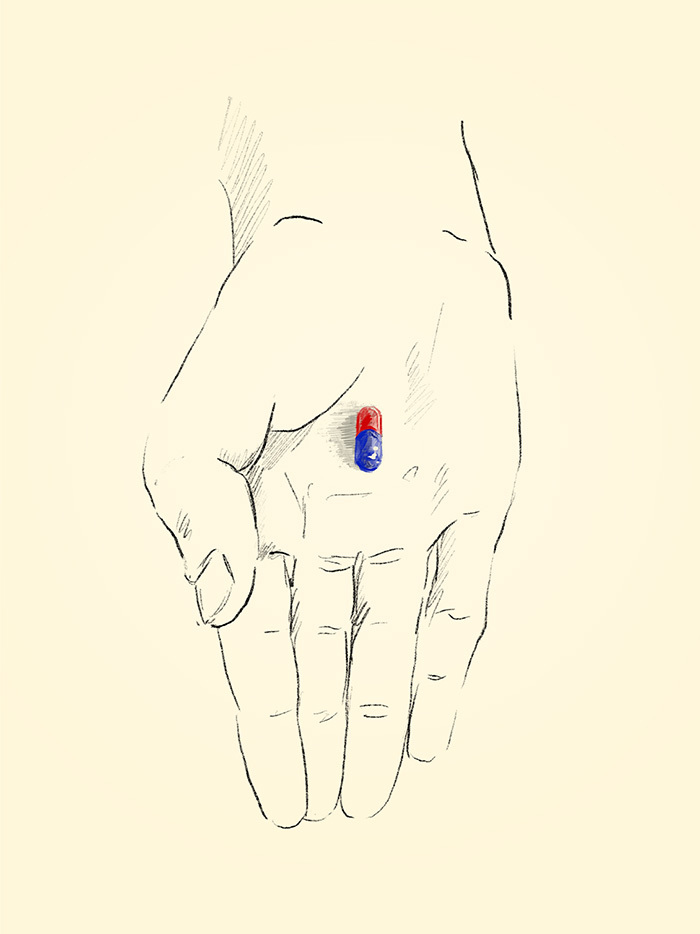
That passage seemed to say, "Just because it's a virtual space doesn't mean it's some kind of simulated experience." Viewing the virtual world as a new domain for architectural spatial design made me feel its immense potential.
In the virtual realm, we can obtain all kinds of data: where people went, what routes they took, what they saw, what they bought. Traditional city planning required years of complex, iterative adjustments. In the virtual world, however, updates can be made whenever issues arise. Recent games actually implement improvements like enhancing map navigability based on test users' behavior logs. Trial and error can be repeated at speeds orders of magnitude faster than in reality.
Virtual space transcends reality, becoming a place visited by diverse people from different countries and speaking different languages. It presents an opportunity to create a super-diverse environment. Real cities have become places riddled with regulations, fragmented by land rights and jurisdiction. To prevent the promising virtual space from following the same path, what rules should govern the creation of cultural and commercial spheres? A new grand design is becoming necessary.
The Era of Virtual Immigration Screening
You might wonder if such an era is truly coming, but in a neighboring country, government-led regulations on gaming time are reportedly starting. What happens in the game world is highly instructive for predicting how VR will transform our reality. For example, in the online game Fortnite, artists held live concerts within the game, attracting simultaneous participation from approximately 10 million people worldwide. I participated in real time myself. Watching the concert while flying through skies impossible in reality, surrounded by world-enveloping lighting effects—it was truly an experience anticipating the future. Fortnite is also becoming a platform transcending the boundaries of gaming, featuring in-game avatar purchases and collaborations with brands and movies, even being recognized at Cannes Lions.
I'm pretty casual about my own clothes, but I realized I have this contradiction: I spend quite a bit of money on in-game avatars and outfits, and I'm quite particular about them.
Spending money on items and fashion that don't exist in the physical world—much like VR—will likely become a more natural behavior. While these currently exist as separate games, enabling cross-platform access with a single account could create a massive economic ecosystem.
This raises some issues with virtual currencies, but it could lead to a situation where people live in a virtual country—a completely new realm beyond the reach of their home nation's laws—while physically remaining in their own country. "To prevent citizens from leaving, let's just ban entry into virtual countries altogether." While exaggerated, the recent growth is so remarkable it makes such a scenario feel almost foreseeable.
Avatar Culture and Personal Trial and Error
The emergence of Vtubers has propelled this "virtual living" forward in one fell swoop. The concept of avatars has rapidly been installed into spaces previously viewed solely as places or venues, dramatically increasing self-immersion and the sense of presence through avatars. Even someone who never posted selfies on Instagram suddenly discovers the joy of self-portraits once they have an avatar.
This image is my friend's avatar, created after he gave up on making a cute one. We experimented with using the avatar as a promotional medium for his hobby music activities.

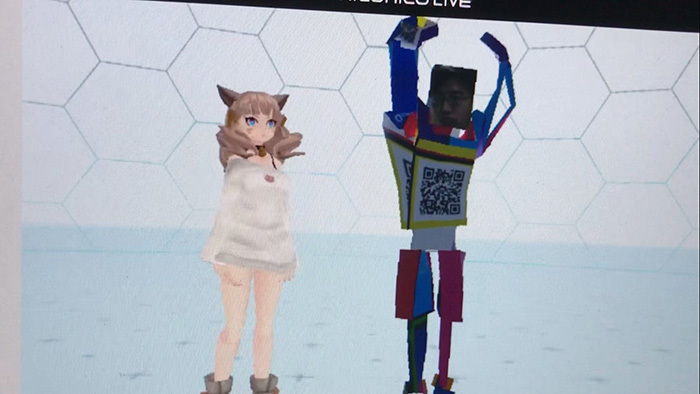
The result is kinda wild, but you can jump to his SoundCloud and listen to his tracks via the QR code embedded all over his body.

I tried subtly promoting him by appearing on someone else's stream using the fantastic Virtual Cast platform. Unfortunately, it was mistaken for an adult site link, and the streamer ended up blurring me out. My sincerest apologies.
Through such mysterious trial and error, I quietly became involved in VTuber operations in my actual work as well.
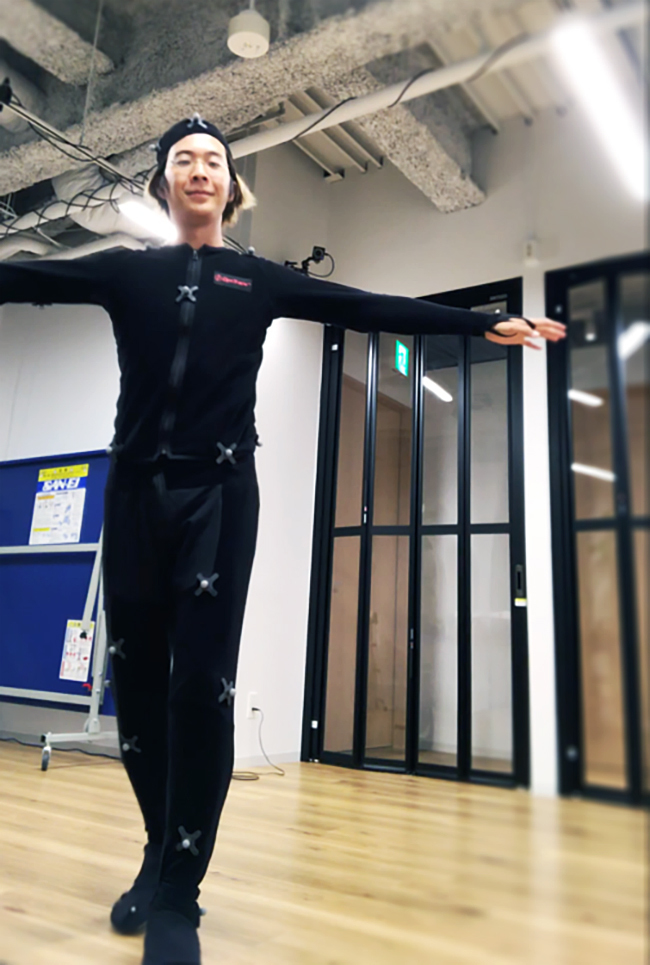

These avatars offer tremendous freedom and hold great appeal as a new advertising medium. In the aforementioned Fortnite, limited-edition avatars collaborated with sports companies, achieving significant global impact. Campaigns within the virtual space can always be launched on a worldwide scale. I truly feel they facilitate connections that transcend language barriers more easily than Twitter or Facebook.
Choosing a venue and choosing assets are similar!? VR New Year's Party
Changing the subject, last year I was appointed organizer for our New Year's party and tried holding it in VR.
Scouting venues is crucial for office drinking parties. The same applies in VR! I searched purchase sites for 3D model data of bars suitable for drinking gatherings (most 3D data can be converted for VR). While checking the venue size and data format on CG purchase sites, I felt like I was searching for restaurants on Tabelog.
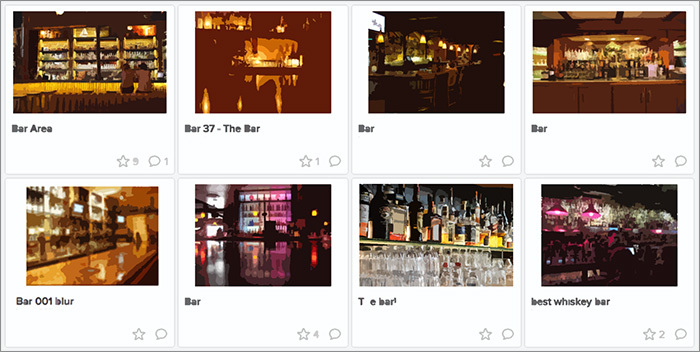
" Bar Area " © Sam Howzit (Licensed under CC BY 2.0 )
" Bar 001 blur " © mu523 (Licensed under CC BY 2.0 )
" Bar 37 - The Bar " © Kelvin (Licensed under CC BY 2.0 )
" Bar " © WayTru (Licensed under CC BY 2.0 )
" Bar " © Daniel Lobo (Licensed under CC BY 2.0 )
" Bar " © Sam Howzit (Licensed under CC BY 2.0 )
" best whiskey bar " © billlutzius (Licensed under CC BY 2.0 )
" bar " © Marie Michaux (Licensed under CC BY 2.0 )
Future VR drinking parties might look like this when searching for a venue.
Ultimately, remembering a senior's wish to visit the savanna, we went with a savanna theme. At first glance, you log into a living room-style VR venue. When you toast, the walls collapse to reveal the savanna.

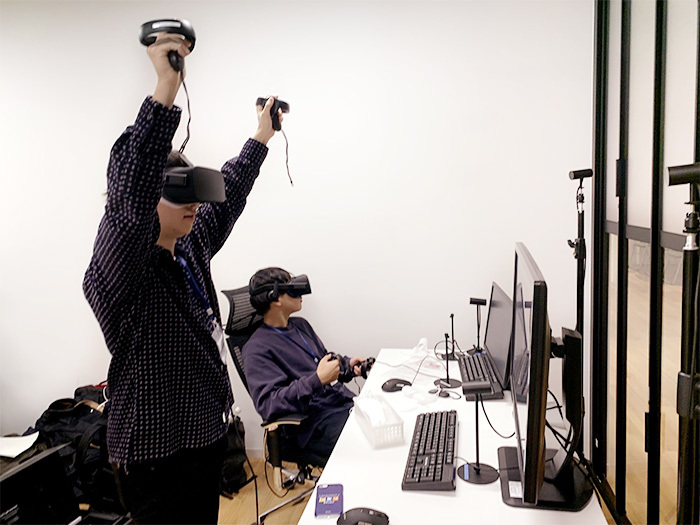
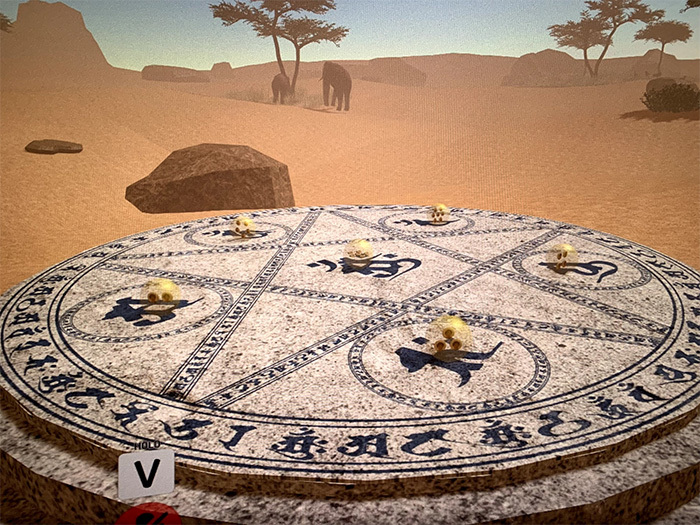
(A mysterious side event also took place: collecting seven balls with the senior's face on them would make the senior grant your wish.)
Virtual Clothing, Food, and Shelter
Avatar culture, VR drinking parties, virtual architecture—the aforementioned topics actually correspond to the themes of clothing, food, and shelter essential for human survival.
While these are distinct domains for professionals in the real world, the boundaries become quite blurred in the virtual realm. In a sense, it's an area where cross-industry entry is relatively easy. For example, an automaker might create a VR mobility solution designed to minimize motion sickness, or a telecom carrier could build a special town accessible only to users of their network. The virtual world is brimming with such possibilities—allowing entirely new approaches while leveraging existing corporate value.
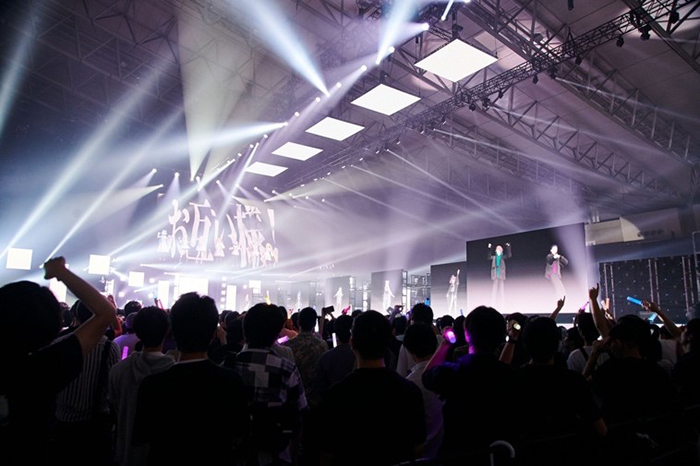

For instance, this event is an actual collaboration with Girls Award Inc. centered on virtual fashion.
Up-and-coming Vtubers appeared clad in clothing designed by creators from various industries—garments that manipulate weather, embrace gravity, or even grow—creating a new fashion scene uniquely possible in the virtual realm.
In the free world of VR, what form would you like to walk in? Virtual fashion is one of the hot topics driving the VR world.
Well, I ended up rambling on quite a bit about VR. What do you think?
VR is a melting pot of diverse cultures, truly on the cusp of a new era. The advertising landscape is still very much a work in progress. We need to avoid creating a dystopia where virtual ads chase you around as you walk through VR spaces, right? I think it's best to start by carefully considering what we can realistically achieve, step by step.
If you're interested, why not give it a try?
Why not start your virtual life?
Was this article helpful?
Newsletter registration is here
We select and publish important news every day
For inquiries about this article
Back Numbers
Author

Suehiro Ryo
Dentsu Inc.
Customer Experience Creative Center Dentsu Lab Tokyo
Planner
Studied architecture and urban planning at university and graduate school. Passionate about spatial design and experience design, both real and virtual. Since joining the company, has primarily worked on large-scale event projects centered around XR.




